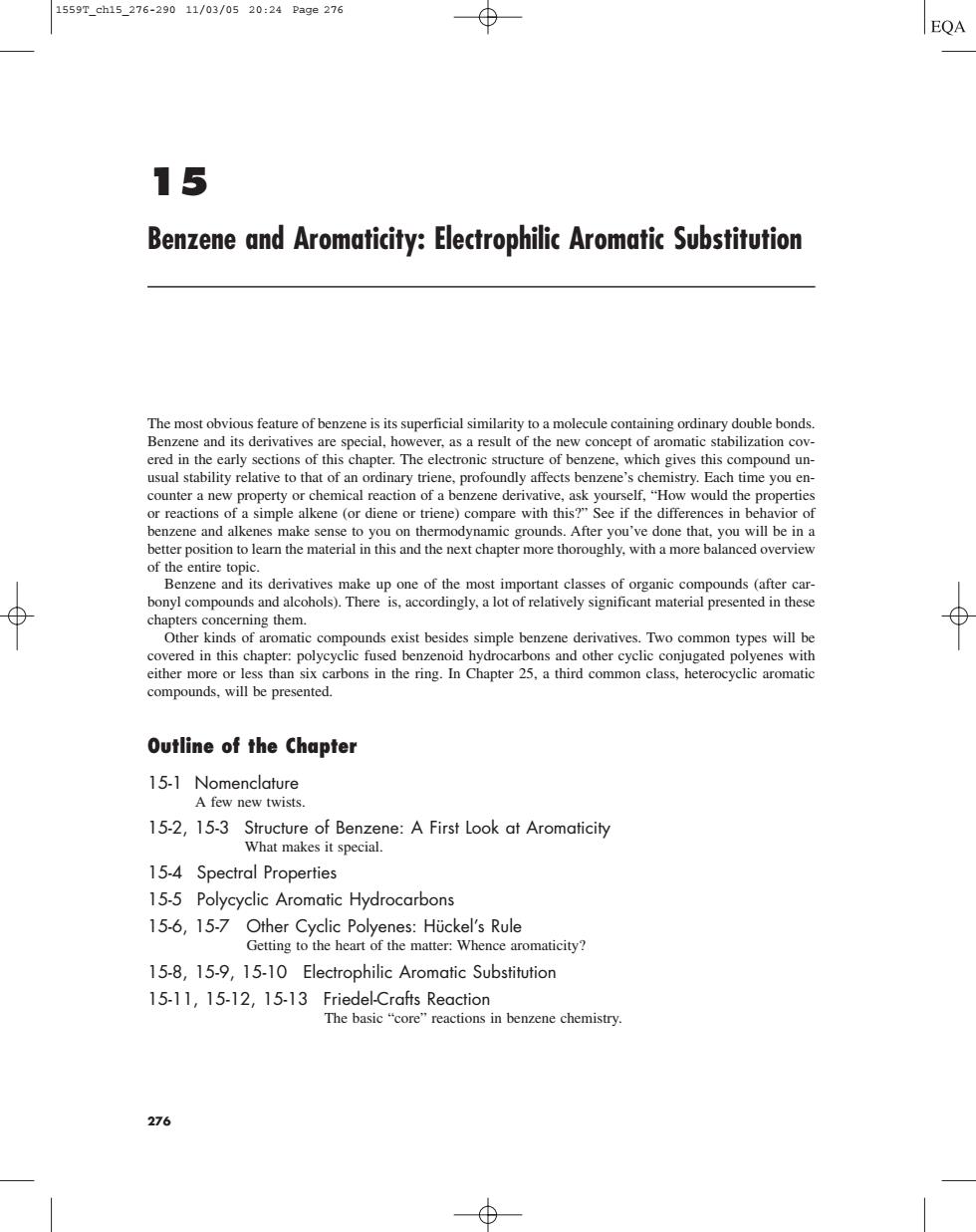正在加载图片...

1559T_ch15_276-29011/03/0520:24Pa9e276 EQA 15 Benzene and Aromaticity:Electrophilic Aromatic Substitution ered in the early sections of thi chapter.The electroni e of benzene.which gives this compound counter a new or reactions of a simple alkene(or diene or triene)compare with this?"See if the differe nces in be vior of enzene and al oube in of the entire topic senzene and concerning them. Oth ds of aromatic compounds exist besides simple benzene derivatives.Two commo ypes will b compounds.will be presented. Outline of the Chapter 15-1 Nomenclature A few new twists 15-2,15-3 Structure of Benzene:A First Look at Aromaticity What makes it special. 15-4 Spectral Properties 15-5 Polycyclic Aromatic Hydrocarbons 156. 15-8,15-9,15-10 Electrophilic Aromatic Substitution 15-11.15-12 1513lcro e em 276 15 Benzene and Aromaticity: Electrophilic Aromatic Substitution The most obvious feature of benzene is its superficial similarity to a molecule containing ordinary double bonds. Benzene and its derivatives are special, however, as a result of the new concept of aromatic stabilization covered in the early sections of this chapter. The electronic structure of benzene, which gives this compound unusual stability relative to that of an ordinary triene, profoundly affects benzene’s chemistry. Each time you encounter a new property or chemical reaction of a benzene derivative, ask yourself, “How would the properties or reactions of a simple alkene (or diene or triene) compare with this?” See if the differences in behavior of benzene and alkenes make sense to you on thermodynamic grounds. After you’ve done that, you will be in a better position to learn the material in this and the next chapter more thoroughly, with a more balanced overview of the entire topic. Benzene and its derivatives make up one of the most important classes of organic compounds (after carbonyl compounds and alcohols). There is, accordingly, a lot of relatively significant material presented in these chapters concerning them. Other kinds of aromatic compounds exist besides simple benzene derivatives. Two common types will be covered in this chapter: polycyclic fused benzenoid hydrocarbons and other cyclic conjugated polyenes with either more or less than six carbons in the ring. In Chapter 25, a third common class, heterocyclic aromatic compounds, will be presented. Outline of the Chapter 15-1 Nomenclature A few new twists. 15-2, 15-3 Structure of Benzene: A First Look at Aromaticity What makes it special. 15-4 Spectral Properties 15-5 Polycyclic Aromatic Hydrocarbons 15-6, 15-7 Other Cyclic Polyenes: Hückel’s Rule Getting to the heart of the matter: Whence aromaticity? 15-8, 15-9, 15-10 Electrophilic Aromatic Substitution 15-11, 15-12, 15-13 Friedel-Crafts Reaction The basic “core” reactions in benzene chemistry. 276 1559T_ch15_276-290 11/03/05 20:24 Page 276